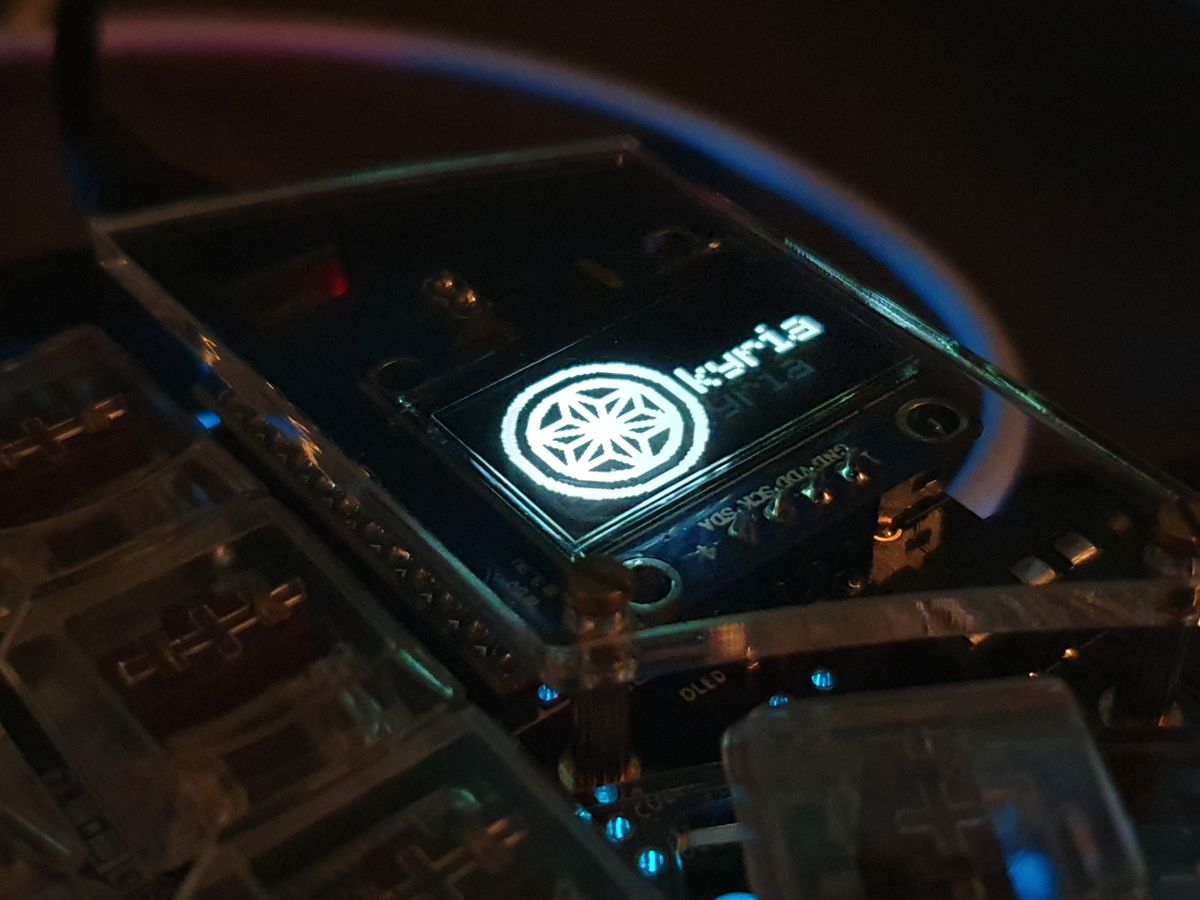How are displays used on a keyboard?

The default graphic on a Kyria rev 3.
Many split keyboards support the use of one or more displays. While they definitely look cool, they are also quite useful, especially if you're just starting out with a split keyboard and are learning to use it along with its firmware.
Uses for displays
Displays are commonly used to display the status of your keyboard:
- Displaying the currently active layer can be helpful, especially when you make use of multiple base layers, which are activated semi-permanently. Base layers are often used when typing in multiple languages, or to have a dedicated gaming or professional workflow layer.
- Displaying lock states is helpful so you know when locks such as caps lock, num lock and scroll lock are active.
- Displaying the battery charge is especially helpful for wireless keyboards, so you know how long you can still go until the next charge.
Of course, it's also used for personalisation. If you compile your own firmware, it's possible to add all sorts of things:
- Custom graphics are possible, including (limited) animations.
- You can add widgets such as a words per minute graph, to see how fast you've been typing.
- You can add debugging information, such as a keylogger or display other state you set your keyboard to keep track of.
Kinds of displays
For wired keyboards, OLED displays are most common. They are small displays, usually with either 128x32 or 128x64 pixels, and are monochrome - the pixels are either on, or off, and cannot display colours.
The Halcyon Series uses an LCD TFT display which can display colours, with a resolution of 240x135 pixels.
For wireless keyboards, we recommend using a more power-friendly display, as OLED displays consume a lot of power compared to the small batteries which are commonly used. Instead, you can use a memory in-pixel display like the nice!view. They're commonly used instead of e-paper because of their similarly low power draw, but much higher refresh speed.
Cool examples
Here are some examples of cool stuff people have done using their displays.
Pong
Someone who goes by the nickname msevilgenius made Pong. The source code is available on Github.
WPM Graph
Someone else who goes by the name brickbots on Reddit, created a words per minute graph on his Kyria. It allows you to view your typing peformance in real-time. You can check out the code in this pull request.
WPM Bongo Cat
James Incandenza made a WPM calculator based on the popular Bongocat animation, where the cat bongoes faster when you type faster! Here's a link to the relevant commit.
What is the reset button for?
Usually the smallest button, it can reboot the keyboard and put it in bootloader mode so it can be flashed with new keyboard firmware.
How are rotary encoders used?
Often for volume control, but there are many more uses.

